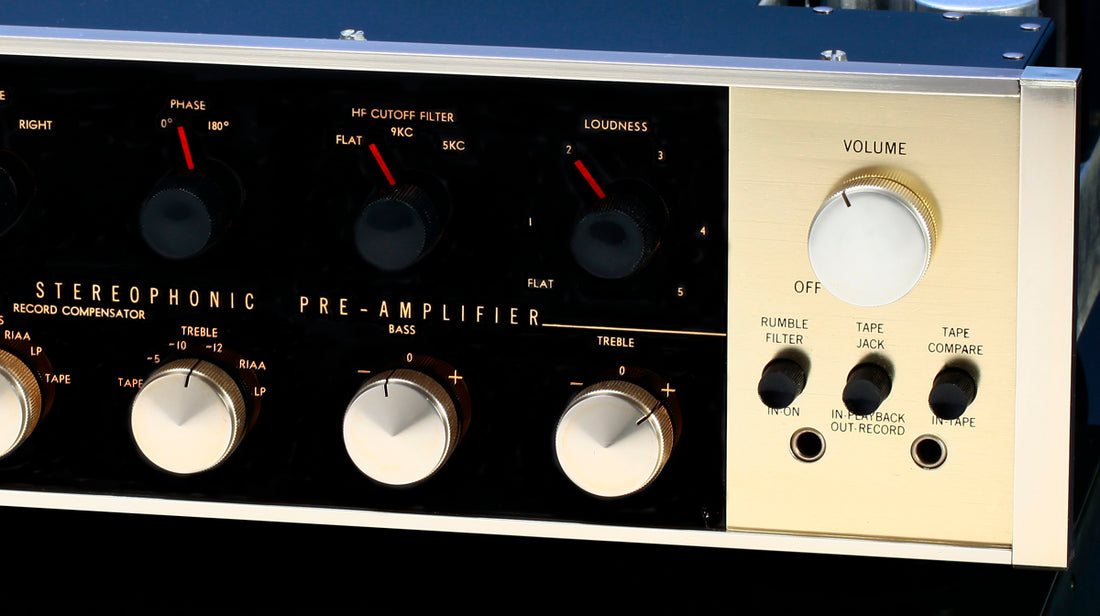The loudness button
by Paul McGowan
I remember the first time I saw a button labeled Loudness. It was on my new Kenwood integrated amplifier of the 1970s.
That control had a great deal of appeal to me, though I hadn't a clue what it did other than by its name—and what stereo lover doesn't want loudness? After all, I didn't invest my hard earned money into a set of boxes just to produce background music.
Pushing that loudness button on and off convinced me to leave it engaged. On, the sound seemed richer, fuller, with extended highs. Off, the system sounded drier, and a little thin. It was a problem I could overcome only with a higher setting of the volume control.
Of course today I understand the loudness control's purpose. To make up for human hearing's shortcomings at low volume levels. It turns out that loudness is a subjective measure, often confused with physical measures of sound strength such as pressure. We perceive bass and treble frequencies to be at lower loudness when the overall volume level is low. That perception does not agree with our measurement devices and so we created a crutch to compensate for the ear/brain's failings.
That crutch is called a Loudness Control, a variable bass and treble boost dependent on where the main volume control position is. The higher the volume control, the lower the bass and treble boost until the loudness circuit is removed from the signal path altogether.
You don't see loudness controls on high-end audio equipment much for two reasons: its benefits have to be weighed against the impurity of additional phase shifting circuitry, and most high-performance systems aren't used at background listening levels so it's not needed.
I do miss my loudness button, however, it was a hoot to play with.
- Choosing a selection results in a full page refresh.
- Opens in a new window.








